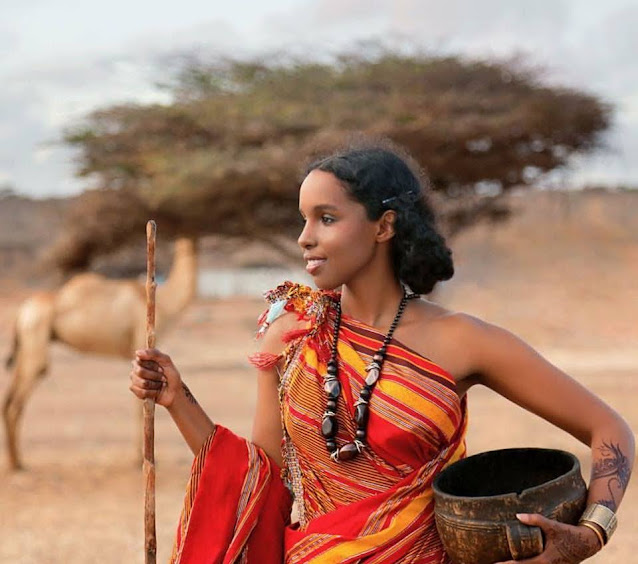Ethiopian Ethnic
Ethiopia's population is highly diverse, with over 80 different ethnic groups. The ethnic group has different cultural traditions and speaks a language that is unique to its race. In total, 87 indigenous languages are spoken in Ethiopia. And Amharic is the only official language.
By: Rediet Shiferahu
Oromo
Holiday
Oromo celebrate Irreecha to Thank Waaqa (God) for the blessings and mercies they have received in the previous year, the Oromo people celebrate Irreecha. At the beginning of spring, to welcomes the new season of abundant harvests associated with nature and creatures after the dark and rainy winter season. At festivals in Irreecha, friends, family, and relatives gather and celebrate with joy and happiness. Festivals at Irreecha bring people closer to each other and build social ties.
Oromo Traditional Food
Chuko, butter-preserved barley, is a popular food in the Oromia region of Ethiopia. Women usually make it with an appropriate amount of distilled butter from barley powder mixed with ginger, onion, salt, and spices.
Amhara
The cuisine of the Amharas consists of various side dishes of vegetables or meat and canapés, typically a wat, or thick stew, served atop injera, a large teff flour sourdough flatbread. One of the commonly accepted and favorite foods in Amhara is Kitfo, which originates from Gurage. For religious purposes, they do not eat pork of any kind. Eating from the same dish in the center of the table with a group of people is also a traditional cultural practice of Amhara.
Somali
Somalia's official language is Somali, and its endoglossic language is also the mother tongue of the Somali people. The Somali population is mostly Sunni Muslim, a small Christian community, and a small Sufi community.
Somali meals, often cooked by women in general, are meat-driven—vegetable for side dishes. Goat, beef, lamb, and chicken are usually fried or grilled or broiled in ghee. Turmeric, cilantro, cumin, and curry are spiced and eaten with basmati rice for lunch, dinner, and occasional breakfast.
TigrayansTihlo is a dish consisting of barley dough balls filled with meat and Berber-based sauce, mostly eaten as a snack, from the historic Agame province in Tigray. Tihlo, particularly in Tigrayan communities, is widely consumed as a side dish or snack.
Sidama
Sidama has a strong cultural tradition surrounding their ownership, and almost 90 percent of the Sidama live an agricultural-centered life. The Wesse plant, or false banana, is an important staple food. Other crops are often grown, and cattle are also raised. Sidaama, or Sidaamu Afoo, is spoken by the Sidama people in southern Ethiopia, particularly in the densely populated Sidama National Regional State.




















Comments
Post a Comment